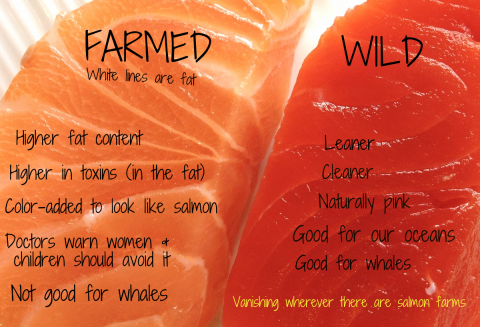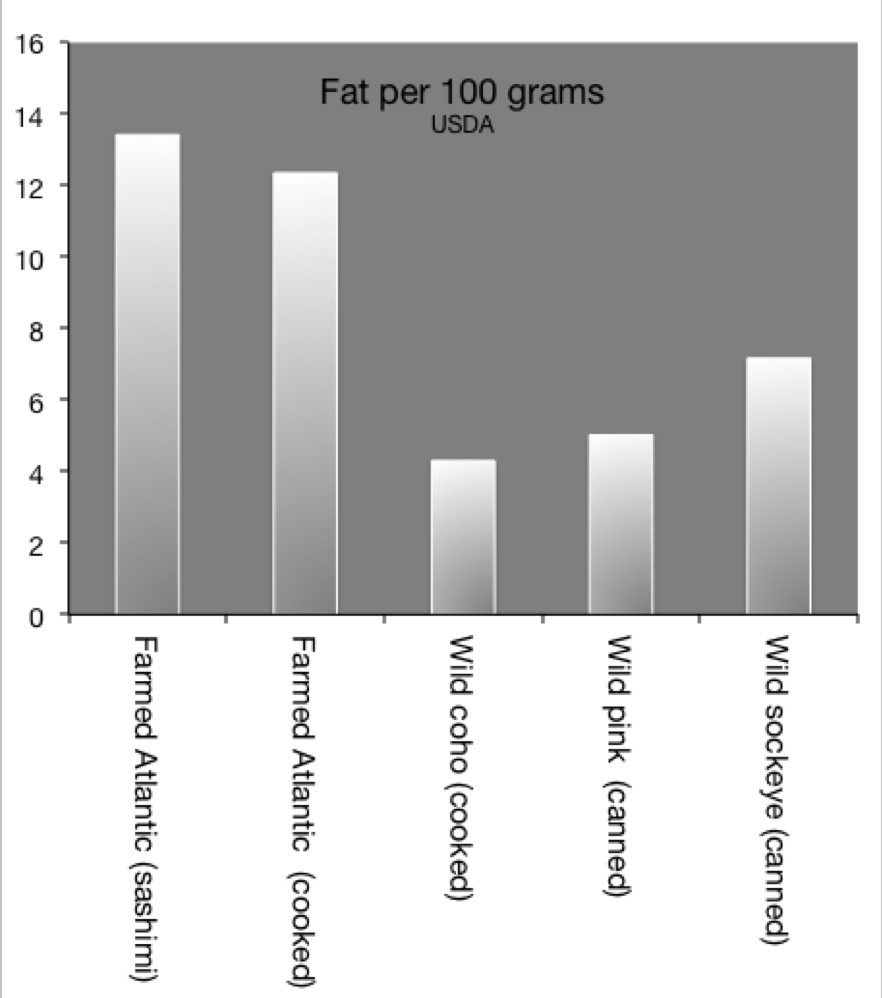You are here
Guide to Safe Salmon

HIGHER FAT CONTENT
Farmed salmon has much higher fat content than wild salmon, because they are fed a high-fat diet designed to make them gain weight as fast as possible. This graph shows some of the data on fat in farmed vs wild salmon. Data is from the USDA.

Wild and farmed salmon are very different in many ways, their lives, the content of their flesh, the risks to you and the environment.
In the picture below you can see the fat in farmed salmon. White stripes like this only occur in farmed salmon. This farmed Atlantic salmon was born in a tray, vaccinated and transferred to an ocean net pen. It swam in circles eating food pellets. It was likely treated for sea lice at least once during its life with a neurotoxin called Slice soaked into its food pellets. The pellets were made of crushed fish from global fisheries. Grains were added to the pellets to supplement the diminishing availability of wild fish ingredients. After 18 months in a net pen in the ocean, it was killed and shipped fresh to this sushi restaurant. While most fish has to be frozen before being served raw, farmed salmon is not one of these. They are exempt from this precaution. So this piece of sashimi came straight to the Vancouver sushi house I visited from a fish farm where 600,000 farmed salmon swam in circles through each other's waste. See CFIA Document 4.2.4

The wild sockeye salmon sashimi below has no white layers of fat. There is fat in this fish, but not enough to build up into white layers. This salmon was born in the gravel of a river and spent a year or more in a lake. It then swam 1,000s of km out to sea chasing fish and shrimp-type food all along the way, growing as it travelled. It escaped whales, sea lions and sharks, then swam back to the coast, where it was caught by a fisherman contributing to the BC economy. This is food of the highest quality.

Read more:
http://alexandramorton.typepad.com/guide_to_safe_salmon/
Copyright APES 2012 Website by Ionsign Online

